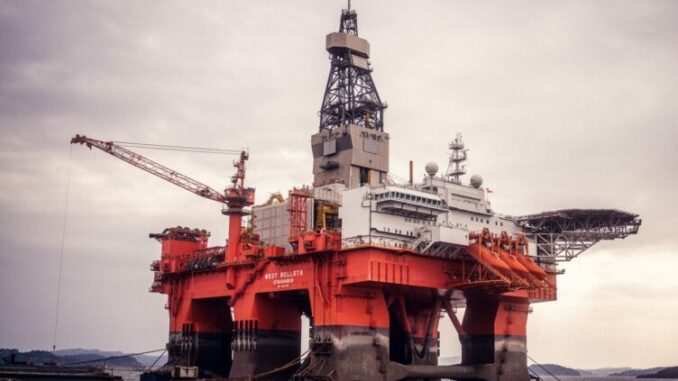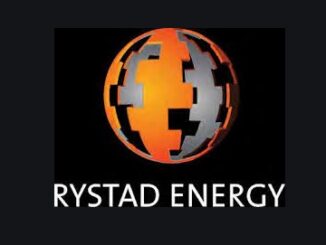
As demand increases, and companies rethink how fast they might want to transition beyond oil and gas, the offshore is having a moment.
Driving the move is the age-old question of access to resources. The size of field required for a supermajor to get out of bed is substantial and must include both the economic returns and the cost of poor publicity.
The Middle East is home to the world’s most abundant resources but upstream opportunities are largely unavailable.
The US and its shale resource has seen incredible growth in the last decade but costs are a constant factor and too much concentration in one area is never good from a risk perspective. Research from Sanford Bernstein has warned that shale oil productivity dropped substantially last year.
Therefore, the last great frontiers – where world-scale fields can be found and developed – are largely concentrated in the offshore and particularly in the deepwater.
Hess, which is active in Guyana and the US Bakken, has highlighted the appeal. Bringing eight wells into production in Guyana’s offshore provides peak production of 120,000 barrels per day at a cost of $3.7 billion.
A similar scale of production in the Delaware Basin would involve 1,500 wells and development capex of $12.8bn.
Not everywhere will provide the returns of Guyana. But the comparison is striking.
Spending cycles
Price crashes of 2014-16 and 2020 helped push back frontier exploration drilling, said Esgian senior analyst Matthew Donovan. In periods of crisis, operators tend to focus on less risky areas.
“Before Russia invaded Ukraine, the energy transition had led some operators to voluntarily limit their drilling in some frontier areas,” he said. “While the focus on the energy transition has quieted somewhat in light of energy security concerns, it has not gone away.”
While prices have fluctuated recently, offshore drilling activism is on the up, Donovan said.
“For the near term, frontier exploration is going to be remain an important subset of exploration drilling. In the longer term, its importance will likely depend on commodity prices and the status of any transition towards renewable energy.”
Rystad Energy forecast recently that the industry would invest $214 billion in offshore oil and gas resources in the next two years. In 2023 and 2024, spending would surpass the $100bn threshold for the first time since 2012-13.
The Norwegian consultancy went on to say offshore activity would account for 68% of all sanctioned conventional hydrocarbons in these two years, up from 40% in 2015-18.
Rystad said the supply chain would not be left out. It forecast spending would increase 16% in these two years, with more activity for rigs, vessels, subsea and FPSOs.
Controlling costs
One area of potential concern is in how prices are creeping upwards. Drilling companies have reported improving outlooks with Noble Corp. saying the market is the most promising it has been for 20 years.
Noble put the average deepwater day rate at $430,000, the highest level since 2015. From 2016 to 2021, this was around $200,000 per day.
Furthermore, it sees a significant amount of uncontracted demand. Fleet utilisation is at 93%, according to Petrodata, similar again to 2015 levels.
Drilling companies have gone through a process of consolidation over the last few years, writing down debt and growing through acquisitions. In addition, new rigs are scarce.
One element of controlling cost will be increased reliability.
James Fisher AIS business development manager Adeshina Adebusuyi said a longer-term view was helping drive a shift towards digitalisation. The company, which provides digital twin technology, has seen an increasing interest in demand.
“It’s not an instant return on investment, but it’s a way for companies to operate at maximum efficiency,” Adebusuyi said. The company can show a return on investment, of avoiding the costs of sending out workers to remote infrastructure such as FPSOs.
A digital twin can also remove the problem of information siloes, he said.
The pandemic helped make the case for such investments, he continued, with companies opting to become more proactive. “You already have these platforms in place, this can help avoid panic. Let’s have this tool ahead of time.”
Middle East option
Leading the charge is the Middle East. For the first time, it said, offshore upstream spending will surpass all others, driven by big plans in Saudi Arabia, Qatar and the United Arab Emirates.
With global demand showing no signs of falling, these deep-pocketed resource-rich states have shown a willingness to invest.
The states see this as an “opportunity for a stay of execution”, Think Research and Advisory’s Neil Quilliam said. “The terms in the past have always been a difficulty and that’s deterred IOCs. NOCs or local companies may move in, but these projects need big companies.”
With IOCs more focused on the energy transition, major offshore projects are a stretch in the region. “Unless conditions are particularly sweet, we won’t see large sums going in. That said, there has been a lot of money going into the East Mediterranean Basin, which is very prospective and the conditions are terms are considered favourably.”
Investing in energy projects will be one way in which richer states can help out smaller states. For instance, Egypt is facing some major economic headwinds.
“Saudi and the UAE have their own national agendas and part of that is to help support stability across the region. They don’t want another Arab Spring,” Quilliam said. “Stability serves the common interest, but that doesn’t mean there is not competition between them.”
While in Europe, banks have been increasingly wary of investing in the oil and gas sector, this is not so much of a concern in the Middle East. Local banks will follow the lead of governments, Quilliam said.
One appeal of working in the Middle East is that water depths tend to be shallower.
Africa offshore
While the Middle East tends to be dominated by state-backed players, Africa is a more open opportunity.
TotalEnergies has pinned much of its hopes on a new “golden block” offshore Namibia. It made the Venus discovery off southern Namibia in 2022 and this year has launched a two-rig programme. The aim of this doubled up activity – costing $300 million – is to speed up the time to market, it said.
Meanwhile, it is also working on new projects in Angola, which has been its long-term base of operations. It may reach final investment decisions (FIDs) on its Cameia-Golfinho plan in Block 20 and 21 this year.
As Total head Patrick Pouyanné has openly acknowledged, the company must invest in new projects as it faces a 4% per year decline curve. At the same time, though, Pouyanné has been keen to stress the importance of value over volumes. Namibia and Angola – and perhaps Suriname – may just provide what he is looking for.
The other major player in Africa’s deepwater is Eni, which has consolidated its operations in Angola with BP. Beyond Angola, though, Eni is pressing ahead with exploration plans in Mozambique and shallow-water work in Morocco.
Angola Agogo
Azule Energy, the Eni-BP joint venture, decided to move forward with its Agogo project in February. The $7.8bn project will see 175,000 bpd of production by 2027 in a marked demonstration of faith in Angola’s deepwater.
Even Permian Basin and Guyana focused ExxonMobil is reconsidering its options in Africa. While the company has stepped back from exploration in South Africa and Ghana, it is aiming to drill a well in Angola’s Namibe Basin in 2024.
The US company will invest $200 million it announced recently, following a deal to revise fiscal terms on three blocks in the region. Should a commercial discovery be made, it might trigger a project worth $15 billion, local officials have said.
In addition, a discovery in Angola’s Namibe Basin could perhaps be replicated over the border in Namibia, which shares the basin.
Carbon plans
Equinor Head of Operations Africa Nina Birgitte Koch said recently that complaints about a lack of financing in the continent had been blamed on banks, political risk and the high cost of capital.
“I believe this is not the fundamental problem. The capital is available if the projects and opportunities are good enough,” she said.
While supporting renewables has a part to play, Koch said that decarbonisation of oil and gas was key to unlocking undeveloped resources.
“What’s the solution? I believe combining upstream O&G experience and capacity with renewable energy and CCS can unlock Africa’s potential and make its upstream production competitive for decades to come,” the Equinor official said.
Rystad Energy head of supply chain research Audun Martinsen said there was an opportunity to tackle emissions and develop offshore production.
“Offshore operators and service companies should expect a windfall in the coming years as global superpowers try to reduce their carbon footprint while advancing the energy transition,” said Martinsen.
Noble has tipped deepwater barrels as less carbon intensive than other sources. It reports that, globally, the deepwater averages 12 kg of CO2e per barrel, which rises to 16 kg for the shelf and then 19 kg onshore.
The difference is more pronounced in Africa. In the deepwater, Nigeria’s emissions are 16 kg of CO2 per barrel and Angola’s 17 kg, while on the shelf they rise to an average of 33 kg.
Companies face a tough task in making deepwater investments, particularly when investors are reticent about such higher risk opportunities. However, for the frontier exploration that pays off, the wins are world beating.



